The past two weeks have been largely dedicated to stripping the inside of the bus down to the shell, cleaning years of accumulated detritus and filth, and collecting parts and supplies necessary to install the electrical and plumbing systems.
First step was to remove the ceiling panels and insulation so that I could identify any leaks or damaged areas.
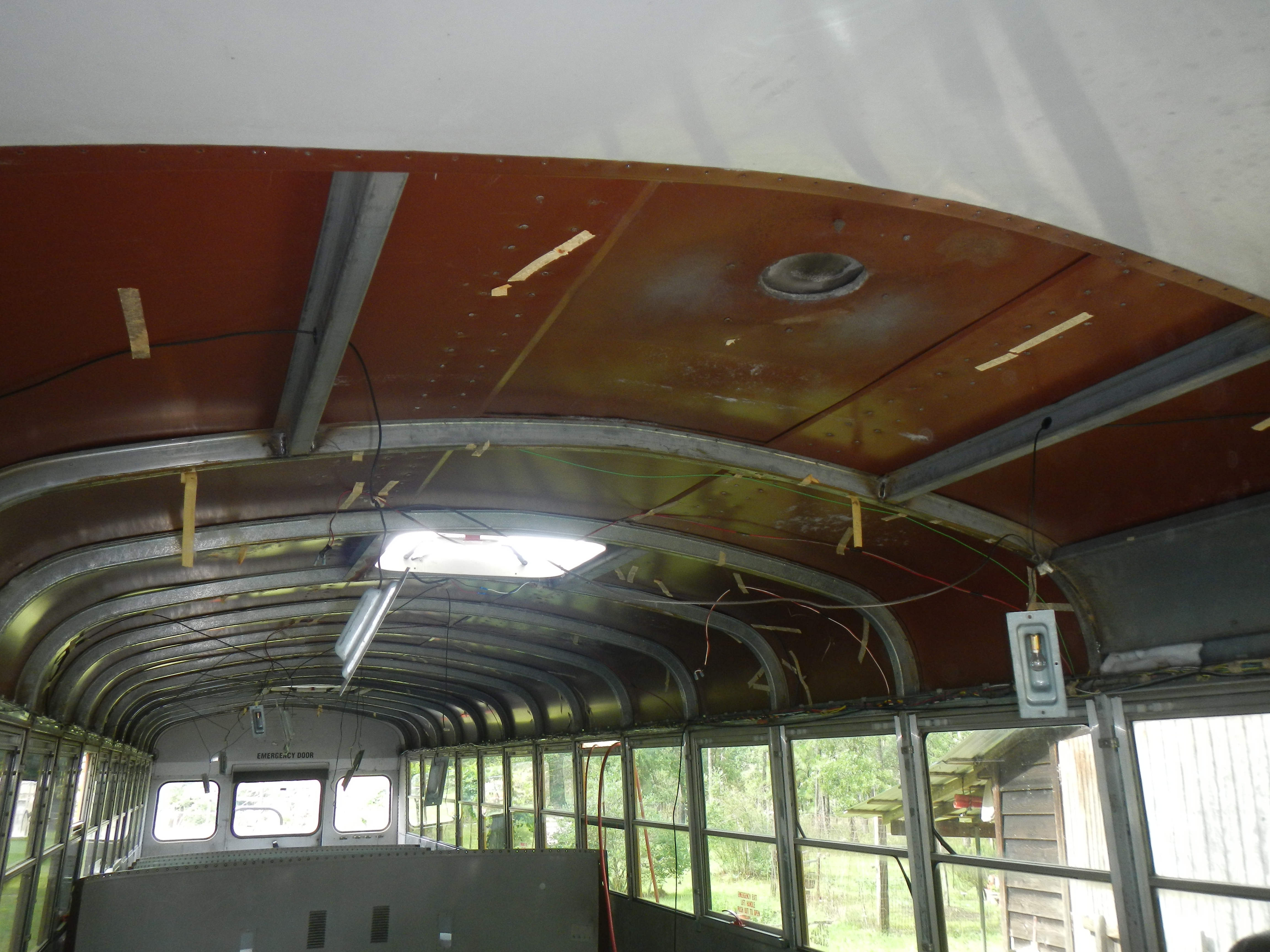
Over all, everything is in pretty good condition. Someone did a sloppy job replacing the rooftop strobe and left several screw holes exposed. Lots of water ingress on that panel, but everything is galvanized so there is minimal and largely superficial rust. Additionally, some of the rivets have begun to leak and rust, but this is nothing that phosphoric acid, sealant and roof coat will not remedy.
In preparation for leak repairs and coating the roof, I spent a significant chunk of time scrubbing the roof to remove years of mildew. The paint has gone a little flat with age but still looks pretty good once cleaned. There are a few small chips and some rust spots near the front, but it doesn’t matter, as they have been treated with phosphoric acid and will soon be covered by a few coats of elastomeric sealer.
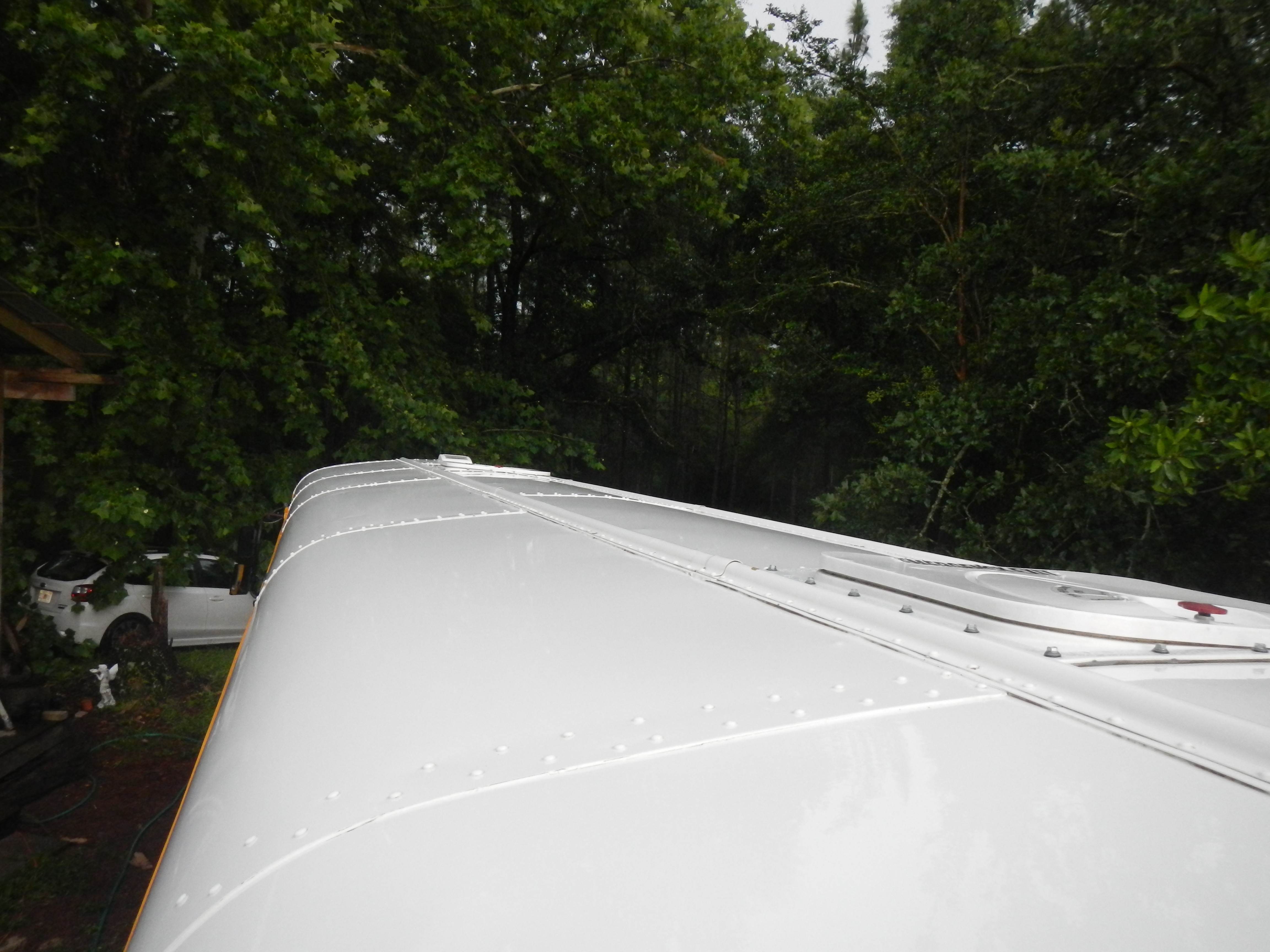
In order to seal the roof, I’ve been forced to divert resources towards shelter, as we have not had a single day in the last two weeks without at least one thunderstorm, and the sealer needs a minimum of 8 hours to cure prior to any contact with water.
Thanks to our neighbor and significant stockpiles of supplies we’ve accumulated over the years, I’ve been able to scrounge or borrow enough rope and hardware that the only purchase required was a 30’x50’ tarp.
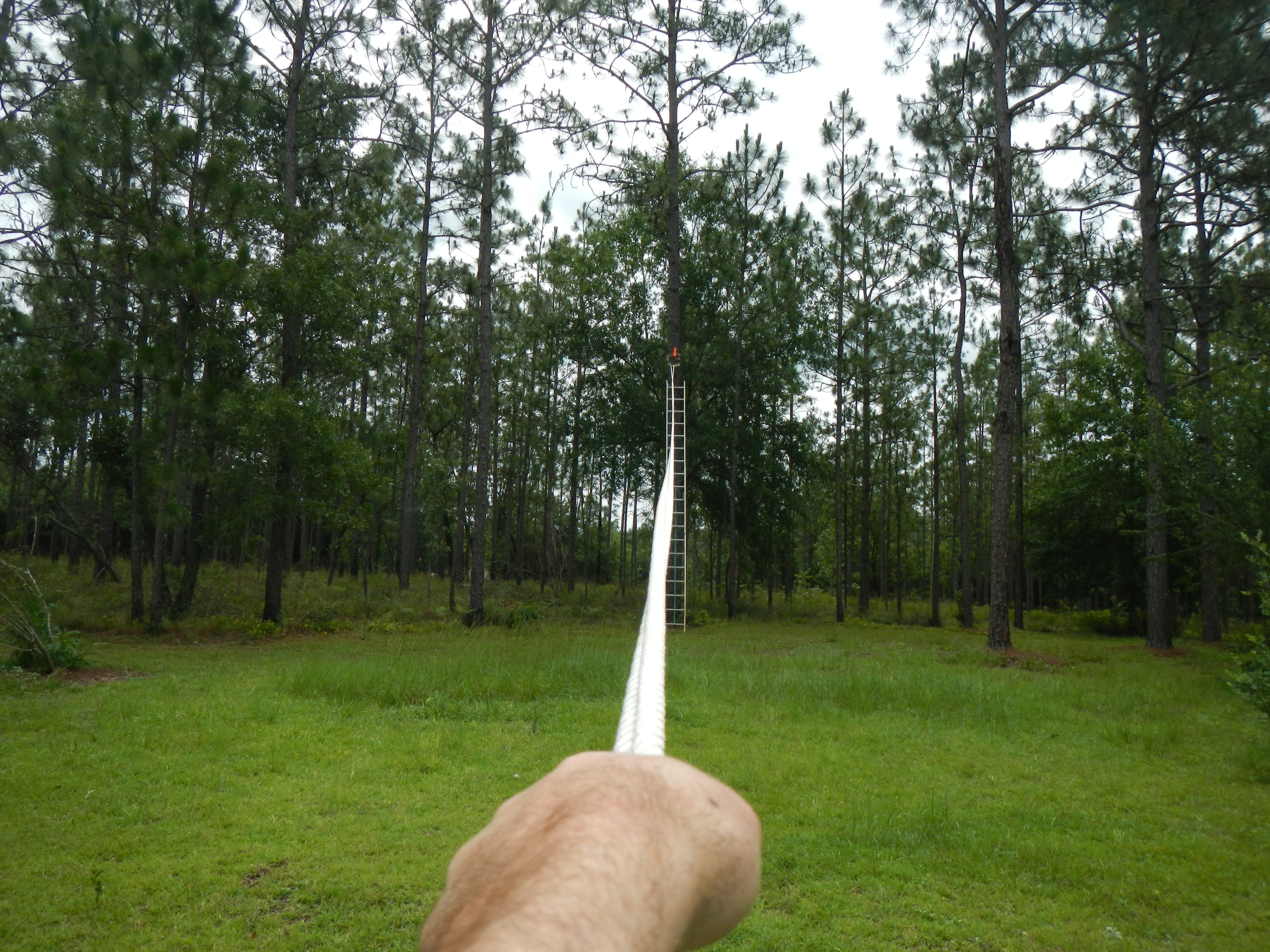
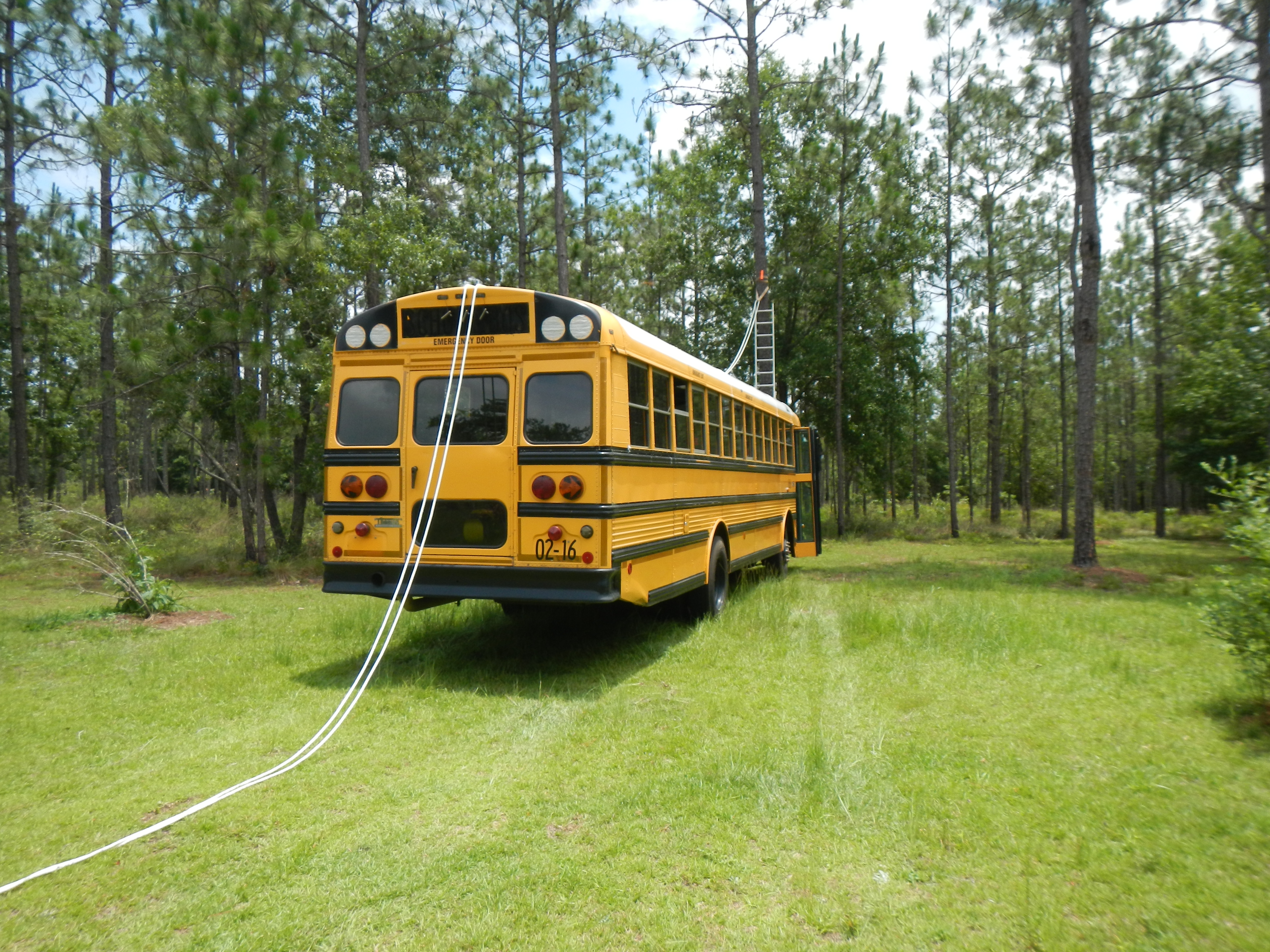

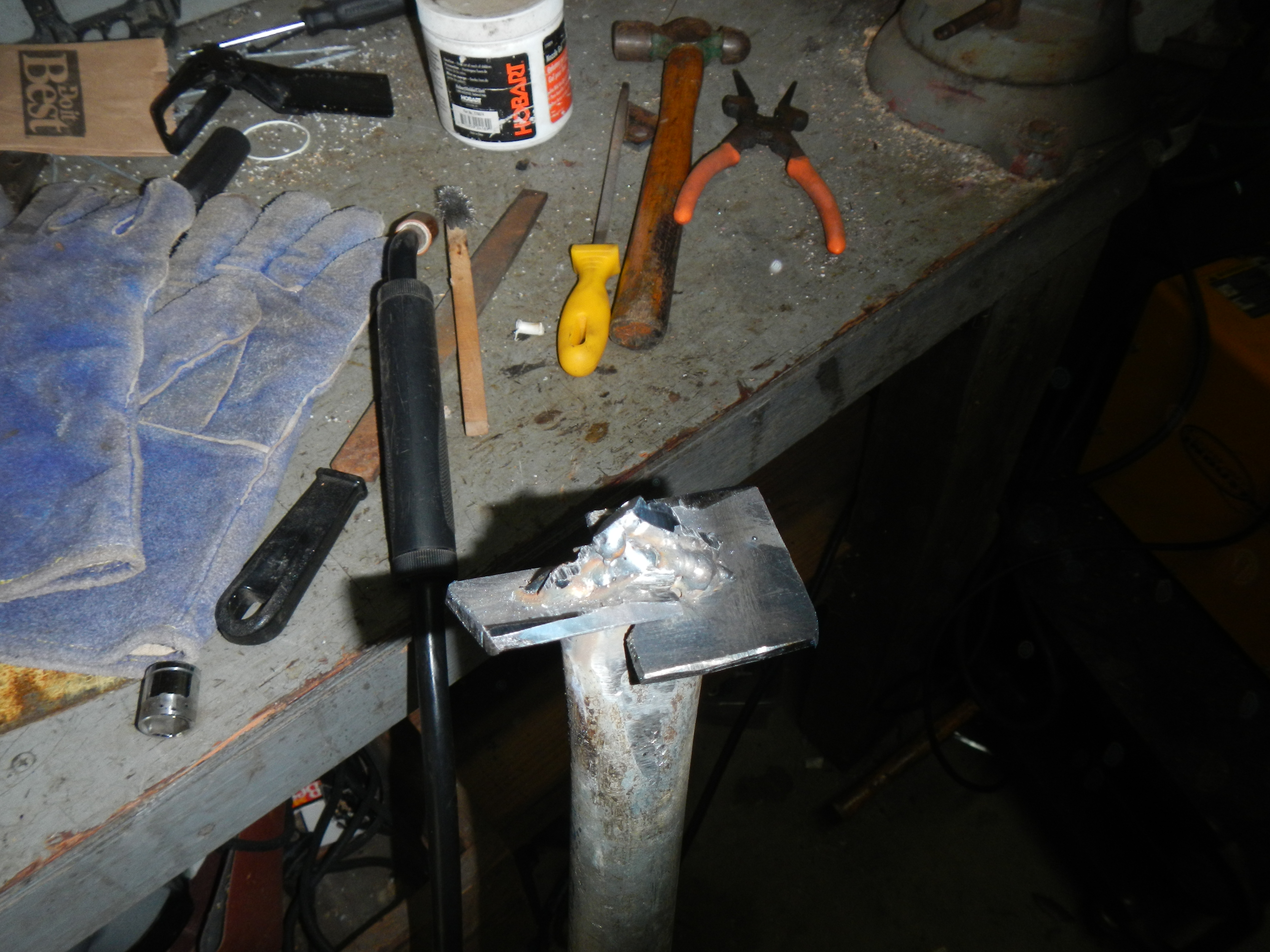
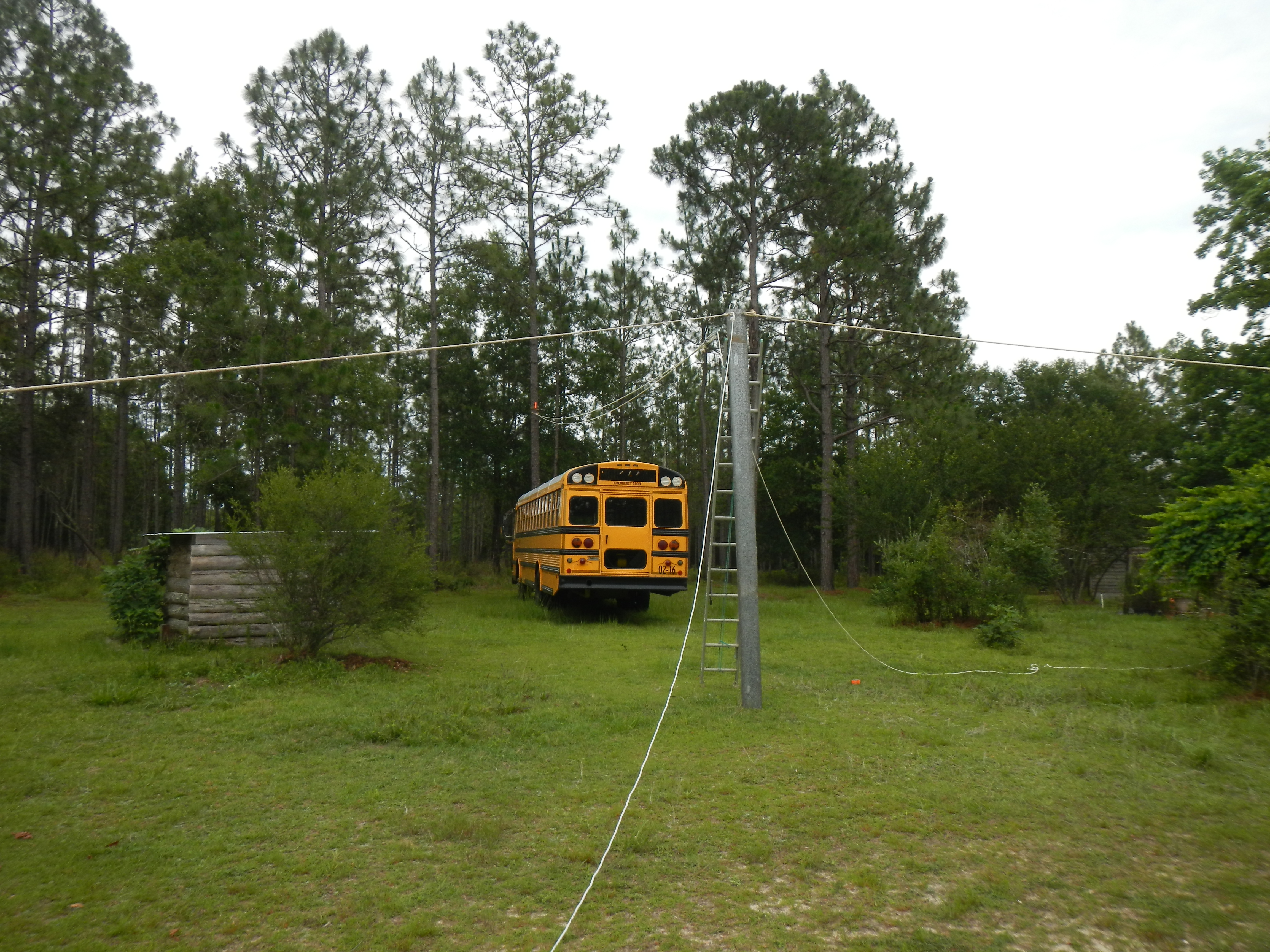

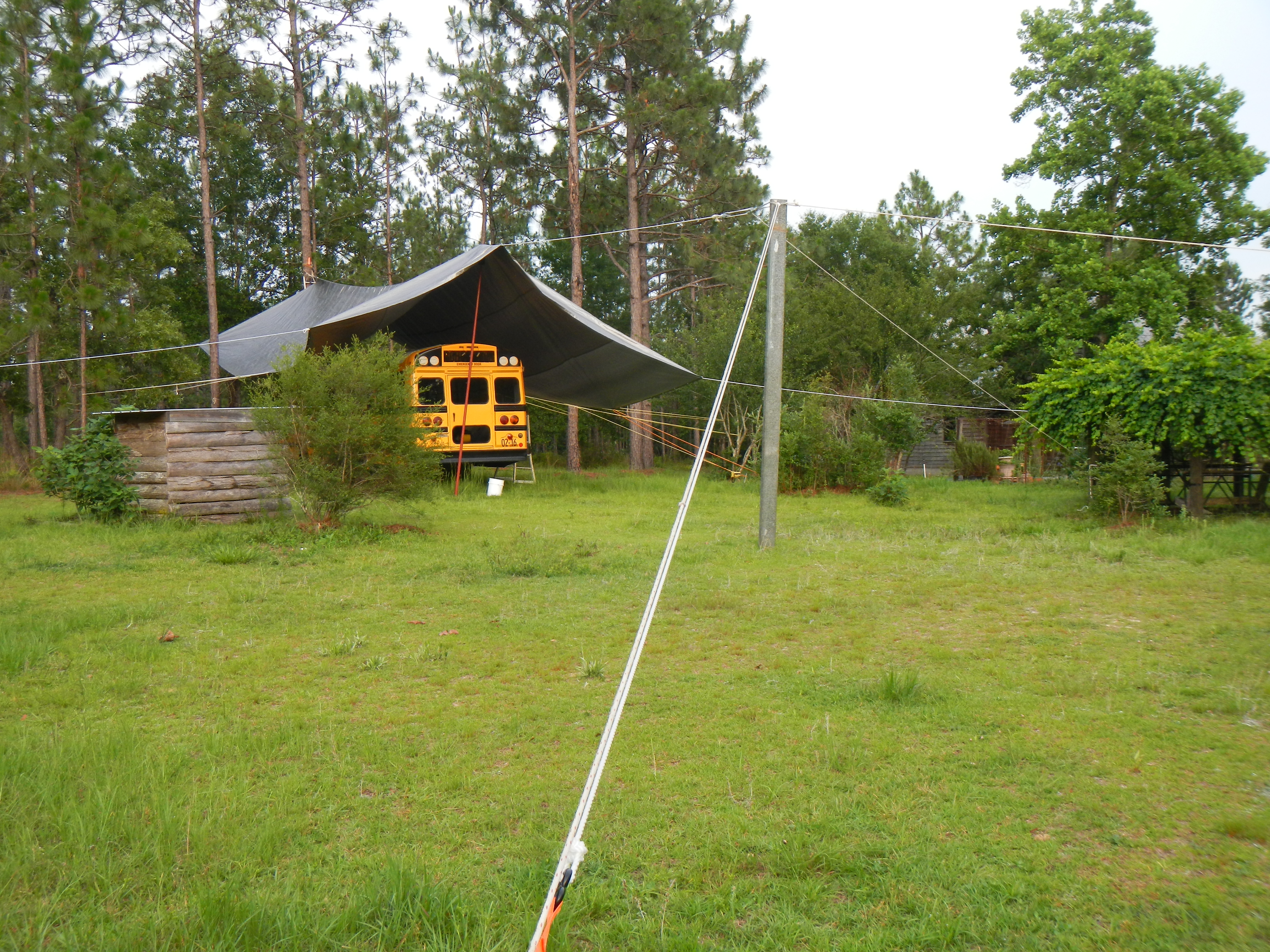
Now that I’ve gotten all this done, it stormed so hard this morning that blowing mist wetted the entire bus even though the roof worked as intended. Looks like I’ll be waiting a few more days to coat the roof until the weather settles down.
In the meantime I’ll get caught up designing the electrical system (solar panels, charge controller, inverter and battery bank) as well as finish pulling and repairing the heater module. Significant progress there over the last few weeks, and those topics will get their own entries in due time.